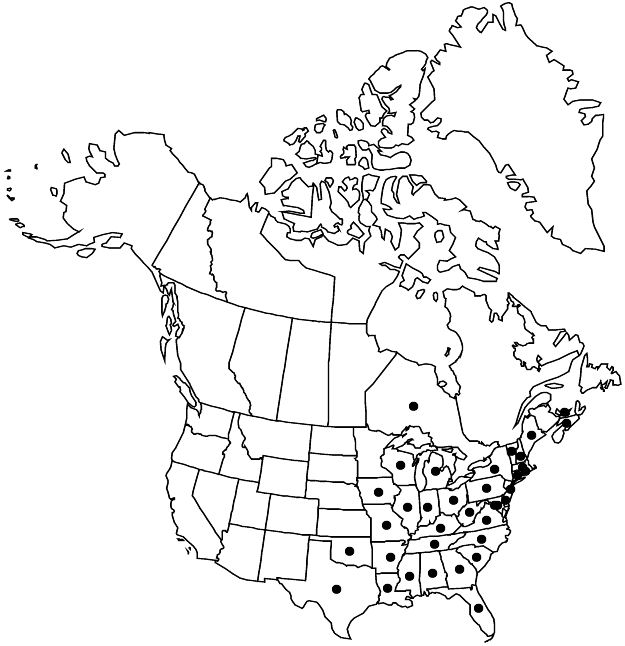Hypericum gentianoides
Prelim. Cat., 9. 1888.
Herbs annual, erect, branches strict, in distal 2/3 or from most nodes, 0.7–6 dm, wiry. Stems: internodes 4-lined. Leaves appressed, sessile; blade narrowly triangular-subulate to linear-subulate, scalelike, 1–4 × 0.4–0.6 mm, subcoriaceous to chartaceous, margins incurved, apex obtuse to rounded, basal vein 1, midrib unbranched. Inflorescences usually pyramidal, 1–24-flowered, branching mostly monochasial. Flowers 3–5 mm diam.; sepals lanceolate to narrowly oblong or linear-lanceolate, unequal, 1.5–2.5 × 0.4–0.8 mm, apex acute; petals orange-yellow to golden yellow, oblong, 2–4 mm; stamens 5–11, 5 separate or obscurely 5-grouped; styles 0.8–1.2 mm; stigmas broadly capitate. Capsules narrowly cylindric-conic, 4–5 × 1–1.2 mm, length 2–2.7 times sepals. Seeds 0.4–0.8 mm; testa markedly ribbed-scalariform. 2n = 24.
Phenology: Flowering late spring–fall (May–Oct).
Habitat: Dry, sandy soil in open woods, fields, roadsides, waste or rocky places, tall-grass prairie
Elevation: 0–500 m
Distribution

N.S., Ont., P.E.I., Ala., Ark., Conn., Del., D.C., Fla., Ga., Ill., Ind., Iowa, Ky., La., Maine, Md., Mass., Mich., Miss., Mo., N.H., N.J., N.Y., N.C., Ohio, Okla., Pa., R.I., S.C., Tenn., Tex., Vt., Va., W.Va., Wis., introduced in West Indies (Dominican Republic), South America (Brazil, Paraguay), Europe (France).
Discussion
Hypericum gentianoides is smaller in all parts than H. drummondii and more branched. The relatively long, narrow capsule is diagnostic, as are the relatively small, often scalelike leaves.
Hypericum sarothra Michaux and Sarothra hypericoides Nuttall are illegitimate names that pertain here.
Selected References
None.